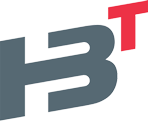
Strategic IT Budgeting Made Simple
Technology is a critical driver of business success, but managing IT costs can be complex. Whether it’s upgrading infrastructure, strengthening cybersecurity, or investing in cloud services, IT expenses need to be carefully planned to maximise efficiency while staying within budget.
For many businesses, IT budgeting is often a reactive process – spending money when issues arise rather than proactively planning for future needs. A well-structured IT budget ensures your organisation can scale, innovate, and remain secure while avoiding unnecessary costs.
In this guide, we break down IT budget planning, helping businesses create a strategic approach to IT investment that aligns with growth and operational goals.
What is IT Budget Planning?
IT budget planning is the process of forecasting technology expenses and strategically allocating financial resources to support business operations. A well-crafted IT budget balances day-to-day costs with long-term investments, ensuring businesses can maintain operations, enhance security, and stay competitive.
An IT budget typically covers:
- Hardware and software – computers, servers, cloud subscriptions, and essential business applications
- Personnel costs – in-house IT staff, contractors, and training
- Cybersecurity – threat detection, compliance, and security tools
- Infrastructure maintenance – upgrades, network improvements, and cloud services
- Business continuity – backup, disaster recovery, and risk mitigation
Why IT Budgeting Matters
A structured IT budget doesn’t just control costs – it ensures businesses can operate efficiently, remain secure, and plan for future technology needs.
Ensuring Operational Continuity
A well-funded IT budget guarantees that core systems – such as servers, networks, and business applications – function smoothly, reducing the risk of downtime that could impact productivity and customer experience.
Supporting Business Growth and Innovation
IT budgets should look beyond immediate operational needs and allocate resources for technology-driven business improvements. Whether it’s cloud migration, AI integration, or upgrading security frameworks, planning ahead prevents costly last-minute investments.
Managing IT Asset Lifecycle
Every business relies on hardware and software that require updates and replacements. IT budgeting helps forecast upgrade cycles, allowing businesses to invest in replacements proactively rather than facing unplanned failures.
Strengthening Cybersecurity and Compliance
New Zealand businesses are increasingly targeted by cyber threats. An IT budget that prioritises cybersecurity – covering firewalls, encryption, training, and monitoring – reduces risks and ensures compliance with data protection regulations.
Improving Cost Control and Financial Forecasting
By tracking IT expenditures and aligning them with business goals, companies can make data-driven decisions, avoiding overspending while ensuring that essential services are well-supported.
Key Components of an IT Budget
A well-structured IT budget includes both capital expenditures (CapEx) and operational expenditures (OpEx):
Capital Expenditures
CapEx covers significant, one-time investments in technology assets that will serve the business for multiple years. Examples include:
- Purchasing new hardware (servers, computers, networking equipment)
- Upgrading software licenses
- Investing in new IT infrastructure
Operational Expenditures
OpEx includes ongoing expenses required for day-to-day IT operations. These costs ensure continued functionality and security. Examples include:
- Cloud service subscriptions (Microsoft 365, Google Workspace)
- IT support and managed services
- Security tools and software updates
- Regular hardware maintenance
How to Create an Effective IT Budget
A strong IT budget requires thoughtful planning. Here’s a step-by-step approach:
Assess Current IT Operations and Costs
Review your current IT expenses, including software subscriptions, personnel costs, and infrastructure maintenance. Identify areas where spending is higher than necessary and where cost-saving opportunities exist.
Align IT Spending with Business Goals
Consult with department heads to determine business priorities. If expansion is planned, ensure your IT budget includes cloud scaling or additional cybersecurity measures.
Forecast Future IT Needs
Consider both short-term and long-term IT investments. Identify upcoming hardware and software renewals, cloud migration plans, cybersecurity improvements, and new technology adoption such as AI or automation.
Balance Capital and Operational Costs
Avoid overspending in one category while neglecting another. Cloud services (OpEx) may reduce hardware investments (CapEx), while managed IT services can offer cost-effective solutions for in-house IT management.
Include Security and Compliance Costs
Cybersecurity should be a priority. Ensure funds are allocated for advanced threat detection, employee security training, and regular compliance assessments.
Implement Monitoring and Adjustments
An IT budget is not a fixed document. Regularly review expenditures, compare them to projections, and adjust where necessary. Technology evolves rapidly, and budgets should be flexible enough to accommodate new challenges and opportunities.
Best Practices for IT Budgeting
Prioritise Cybersecurity Investment
A data breach can be costly – not just in financial losses but also in reputational damage. Ensure cybersecurity is an integral part of your IT budget.
Use Data to Drive Decisions
Analyse past spending trends and IT performance metrics to guide budget allocations. A data-driven approach helps businesses prioritise areas that offer the highest return on investment.
Involve Key Stakeholders
IT budgeting isn’t just an IT department responsibility. Collaborate with finance, operations, and leadership teams to ensure that IT investments support overall business objectives.
Plan for Unexpected Costs
Technology failures, cyber incidents, or regulatory changes can lead to unplanned expenses. Set aside a contingency fund to address these situations without disrupting core operations.
Review and Adjust Regularly
A yearly budget review isn’t enough. Conduct quarterly or semi-annual assessments to ensure IT spending aligns with business growth and market changes.
Building a Resilient IT Strategy with HB Technologies
At HB Technologies, we help businesses take control of IT budgeting with expert planning and cost-effective solutions. Whether you need to optimise your IT expenses, strengthen cybersecurity, or migrate to the cloud, our team ensures your technology investments deliver real business value.
Let’s Talk IT Strategy
Get in Touch with HB Technologies today!
Contact us learn more about how we can support your business – email info@hbtech.co.nz or phone 0800 423 834.


